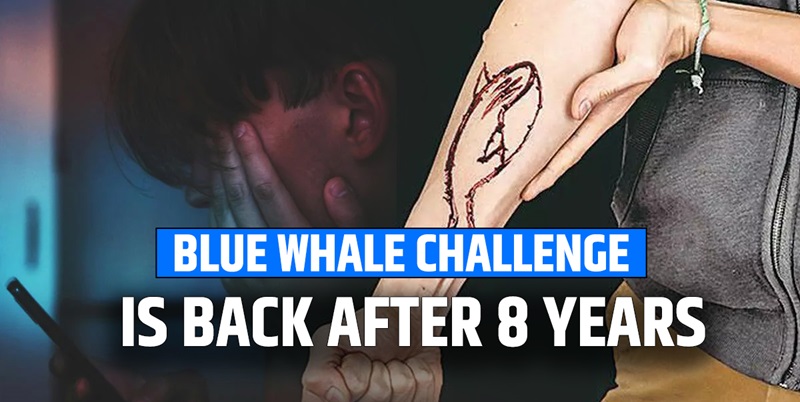The Blue Whale Challenge has captured the attention of the media and the public in recent years, sparking debates about the dangers of online influence and the impact it can have on vulnerable individuals. This controversial online phenomenon is shrouded in mystery and speculation, with many questioning its origins and motives. Some believe it is a sinister game designed to manipulate and harm participants, while others argue it may simply be a hoax or urban legend blown out of proportion. Regardless of its true nature, the Blue Whale Challenge serves as a stark reminder of the potential dangers lurking in the depths of the internet.
At the heart of the Blue Whale Challenge is a series of tasks and challenges that participants are instructed to complete over a period of 50 days. These tasks range from watching horror movies to engaging in self-harm, and culminate in the final challenge of taking one’s own life. The anonymous administrators of the game allegedly prey on vulnerable individuals, manipulating them into carrying out these dangerous tasks under the guise of a twisted form of «encouragement» and «support.» The chilling nature of these tasks has understandably raised alarm bells among parents, educators, and mental health professionals, who fear the potential consequences of such manipulative behavior.
Despite the widespread attention the Blue Whale Challenge has received, there is still much debate surrounding its true origins and intentions. Some believe it may have originated as a form of online manipulation and coercion, designed to prey on the vulnerabilities of impressionable individuals. Others argue that it may simply be a hoax perpetuated by internet trolls seeking to spread fear and panic. Regardless of its origins, the impact of the Blue Whale Challenge on those who have been exposed to it cannot be denied.
The rise of the Blue Whale Challenge has sparked discussions about the role of the internet in influencing and shaping behavior, particularly among young people. The anonymity and reach of online platforms make it easy for harmful content to spread rapidly and reach a wide audience, making it difficult for authorities to monitor and regulate. This raises important questions about the responsibility of internet companies and social media platforms in safeguarding their users and preventing the spread of harmful content.
In response to the growing concerns surrounding the Blue Whale Challenge, various measures have been taken to raise awareness and provide support to those who may be at risk. Mental health organizations have launched campaigns to educate the public about the dangers of online manipulation and offer resources for those in need of help. Parents and educators have been encouraged to have open and honest conversations with young people about the risks of engaging in harmful online behavior and to monitor their online activity closely.
As the truth behind the Blue Whale Challenge continues to unravel, it serves as a stark reminder of the potential dangers lurking in the depths of the internet. While the motivations behind the game remain unclear, its impact on those who have been exposed to it is undeniable. As we navigate the complex and ever-evolving landscape of the digital world, it is crucial that we remain vigilant and proactive in protecting ourselves and our loved ones from the dangers that may lurk online.

Understanding the Blue Whale Challenge
The Blue Whale Challenge is a controversial online game that has gained notoriety for its dangerous and potentially deadly challenges. Participants are asked to complete a series of tasks over the course of 50 days, with each task becoming increasingly harmful and self-destructive. The game is believed to have originated in Russia and has since spread to other countries around the world. The true intentions behind the game remain unclear, with some speculating that it was created as a form of online manipulation and psychological manipulation.
Despite numerous warnings from authorities and mental health professionals, some individuals continue to participate in the Blue Whale Challenge, drawn in by the allure of a secretive and exclusive online community. The challenges range from self-harm to waking up at odd hours of the night, and ultimately culminate in the participant being encouraged to take their own life. The game preys on vulnerable individuals who may be seeking a sense of belonging or a way to cope with their emotions.
It is important for parents, educators, and mental health professionals to be aware of the signs of participation in the Blue Whale Challenge and to provide support and resources to those who may be at risk. By understanding the motivations behind the game and the psychological factors that contribute to participation, we can work towards preventing further harm and protecting vulnerable individuals from falling victim to this dangerous online phenomenon.
Fact vs. Fiction
As humans, we are naturally inclined to seek out the truth in any situation. We rely on facts to guide our decisions and form our beliefs. However, in today’s information age, it can be increasingly difficult to discern fact from fiction. With the rise of social media and the spread of misinformation, it is important to critically evaluate the information we are presented with. Fiction can be alluring, offering a sense of escapism and entertainment, but it is important to remember that facts are the foundation of our understanding of the world. When we allow fiction to shape our beliefs and actions, we risk losing touch with reality and making decisions based on falsehoods.
It is crucial to question the sources of information we encounter and fact-check before accepting something as true. In a world where misinformation spreads like wildfire, it is more important than ever to prioritize truth and accuracy. By staying vigilant and seeking out reliable sources of information, we can navigate the sea of fiction and come out on the side of truth. In the end, facts are the bedrock of our knowledge and understanding, and it is up to each of us to uphold their importance in a world that is increasingly clouded by fiction.

Impact on Youth and Mental Health
The impact of substance use on youth and mental health is a growing concern in society. Substance use can have detrimental effects on a young person’s mental health, leading to issues such as depression, anxiety, and mood disorders. This can be especially harmful during adolescence, a critical period of development where young people are already vulnerable to emotional and psychological challenges. Substance use can exacerbate these issues, creating a vicious cycle of self-medication that only serves to worsen mental health symptoms. Additionally, substance use can impair a young person’s judgment and decision-making abilities, leading to risky behaviors and potentially dangerous situations.
The long-term consequences of substance use on mental health can be severe, with studies showing a correlation between early substance use and the development of psychiatric disorders later in life. It is crucial for parents, educators, and healthcare professionals to be aware of the impact of substance use on youth and mental health, and to provide support and resources for young people who may be struggling. By addressing these issues early on and promoting healthy coping mechanisms, we can help prevent the harmful effects of substance use on youth mental health and promote overall well-being and resilience in young people.
Responses from Authorities
Responses from authorities play a crucial role in maintaining order and ensuring the safety of society. When individuals or groups engage in behaviors that go against established norms or regulations, it is up to authorities to intervene and address the situation. Authorities have the power to enforce rules and regulations, investigate potential violations, and take appropriate action to address any issues that may arise. These responses can vary depending on the severity of the situation and the impact it may have on the community.
In some cases, authorities may issue warnings or citations to individuals who are engaging in behaviors that are deemed inappropriate or harmful. In more serious cases, authorities may need to take more drastic measures, such as making arrests or seeking legal recourse. Regardless of the specific response, the goal of authorities is to maintain order and protect the well-being of the community as a whole. By responding promptly and effectively to situations that arise, authorities can help to prevent further harm and ensure that individuals are held accountable for their actions. Ultimately, the responses from authorities are essential for upholding the standards and values of society and ensuring that individuals are held responsible for their behaviors.

Preventative Measures
Preventative measures are crucial in maintaining order and safety within a community. By implementing strategies to deter negative behavior before it occurs, society can proactively address potential issues and minimize harm. These measures can range from increased security measures in public spaces to educational campaigns that promote positive behaviors. By taking a proactive approach to addressing potential problems, communities can create a more secure and harmonious environment for all residents.
Preventative measures also serve to empower individuals to make informed decisions that contribute to the overall well-being of society. By promoting a culture of prevention rather than reaction, communities can work together to address underlying issues and create a more sustainable and resilient society. Ultimately, preventative measures are essential in fostering a sense of community responsibility and accountability, as individuals are encouraged to take ownership of their actions and work towards a common goal of creating a safer and more harmonious environment for all.
